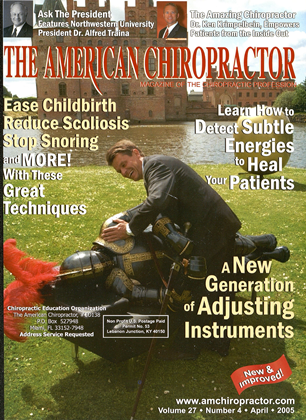We read the article by Mitchell R. Mally, DC, as much with interest as consternation when he talks about the use of pro-teolytic enzymes (The American Chiropractor, January 2005, p. 30). His contention that long-term use of proteases was "NOT recommended" is both contrary to the bulk of scientific and clinical evidence and is countered by his immediately preceding assertion "...extremely beneficial enzymes, such as pa-pain and trypsin, when combined, are very effective for acute inflammation." The rationale provided by the writer is a misreading, if not misunderstanding, of how proteases, functioning systemically, exert their beneficial effects. First and foremost, proteases—such as, papain, trypsin, chymotrypsin and pancreatin— bind to a carrier protein called a2-macroglbulin (A2M) upon uptake into the bloodstream. That is how they help modulate the pro- and anti-inflammatory cytokine profile. Which leads him to conclude that the "anti-enzymes" must be produced. While there is a reservoir of these so-called anti-proteases in the circulating blood, the contention that the body would lose its ability to produce such proteins is erroneous. For it ought to be clear to the Continues on pg 33 From pg 8 LETTERS TO TAC Reader Asks to Set the Record Straight on Proteases minimally initiated in the field of enzymology that house-keeping proteins are genetically programmed, and are not subject to regulation by exogenous supply, or dietary intake. Ifsuch were the case, the ramifications of such a clampdown on protein synthesis would be physiologically devastating. People consume a vast array of proteins in their daily dietary intake, some of which are garden-variety proteases. If the "anti-enzymes," as the writer refers to them, were subject to such regulation, there would be a progressive decline in the production of these proteins long before anyone would develop arthritis or suffer repetitive motion/ergonomic injuries. Imagine the consequences: The commerce of the bodily metabolism would come to a halt. That is not the case, however. Hence, the conclusion reached by the writer is unjustified and should be retracted. In addition, Marlyn Nutraceuticals should be given the same forum to publish what scientific and clinical evidence has shown over the past decades: that proteases work and that they are perfectly safe as nutritional supplements for long-term use. The Mally article leaves the incorrect and misleading impression, not just with the chiropractors, but also the consumers who are in dire need of help. TAC should disseminate credible and authentic information corroborated by scientific and clinical evidence and not by unsubstantiated snap comments as made by Mitchell R. Mally, DC. Aftab J.Ahmed, Ph.D. Marlyn Nutraceuticals, Inc. TAC's Response: Keep your eyes open, Readers, for an article from Marlvn Nutraceuticals in a future issue of The American Chiropractor. HOW TO CONTACT US LETTERS TO OUR EDITOR: Please include your name, address, phone number, and e-mail, if you have one. Letters may be edited for clarity or space. MAIL: Send your letters to the following address: The American Chiropractor, #CO138 P.O. Box 527948, Miami, FL 33125-7948 FAX: 1(305)716-9212 E-Mail: Letters to our editor can also be sent to [email protected]. TAC ON THE INTERNET: Check out our website for portions of this issue and the complete text of past issues: www.TheAmericanChiropractor.com.
 View Full Issue
View Full Issue






